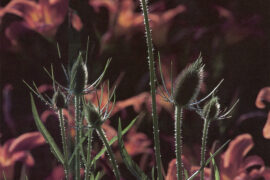By Matthew DeBord
HQ 74 | SUMMER 2011
The Huntington Quarterly‘s illustrious editor and publisher, and my longtime wine buddy, informed me about a month ago that numerous readers of the magazine had some questions about wine. So, we decided to try something we’ve never down before in the 10 years I’ve been dispensing wine advice for the publication: a Q&A session. You were all kind enough to send in some great questions, so now I’m going to call upon my vast experience with the world of the grape to answer them.
Q: I’ve tried wines made from the same grape, but which are grown in different parts of the world, and they vary dramatically in style, texture, aroma and taste. Is this a product of where they are grown or how the wine is made?
A: Both, actually. The simplest way to explain this is to point out that in the “Old World” – Europe – wine developed alongside culture and cuisine. So French wines express French culture and are made to pair well with French food. Likewise, German wines express German culture; Spanish wines, Spanish culture; Greek wines, Greek culture; and so on. Of course, the “noble” grapes of the Old World – Cabernet Sauvignon, Chardonnay, Pinot Noir, among others – are now the preferred grapes of the New World. In America and Australia, wine is less an expression of culture than of the ambition to make great wine. So a California Cabernet might be designed to impress, while a French Bordeaux is intended to perpetuate the values of Bordeaux (and go with French food). Also, winemakers everywhere like to put their stamp on their wines. So if California gives a winemaker incredibly ripe fruit, he or she might just run with it. The result is a “big” wine that might shock a French winemaker with its boldness.
Q: If synthetic corks and screw tops protect wines from the bacteria that sometimes infect natural corks, why don’t more winemakers use the better alternatives? It would seem to be a no-brainer to protect the investment in what can be a very expensive bottle.
A: This is a matter of tradition more than anything else. Tradition says that fine wines are supposed to have natural corks, regardless of whether one of roughly every 24 of those wines will be ruined due to “cork taint.” A lot of winemakers are currently making the switch, though, and the change is even creeping up the price ladder. Wines in the $30-$60 range – wines that would have been no-brainers for natural corks just five years ago – are now being sealed with synthetic “corqs” or screwcaps. The times, they are a-changin’.
Q: Why do I like Pinot Noir from the Sonoma region better than Oregon?
A: Oregon Pinots are more like their Burgundian relatives: lighter and more aromatic. Sonoma Pinots are more fruit-forward, richer and more robust. You shouldn’t be surprised that you prefer Sonoma Pinots; they’re made in a style that’s more immediately pleasing. Also, Oregon Pinots can sometimes exhibit some of the weedy flavors that people typically don’t like in off-vintage-year Burgundies.
Q: Does it matter what kind of glassware I use to serve wine? Will it affect the taste?
A: The Austrian glassmaker Riedel has designed a stem for every type of wine, and if you don’t mind spending handsomely on your glasses, they make a difference. But for most folks, keeping two basic, clear glasses around is all that’s necessary. Whites are typically served in a smaller glass with a more narrow mouth, while reds like a larger “bowl” and a bigger mouth. That said, I’ve used a basic stem, designed for Zinfandel, to serve both – and no one has complained.
Q: If I can’t finish a bottle of wine, what is the best way to preserve it for later?
A: You can stick the cork back in and put it in the fridge. If it’s a red, allow it to warm up a bit before enjoying it again. I also like the Vacu Vin system, which provides you with rubber stoppers and a hand pump to suck the air out of the bottle. The important thing is to keep the leftover wine away from air and heat.
Q: Why are white wines traditionally served chilled while reds are served at room temperature? Is it simply a culinary choice or is there something more scientific behind how the wines react to temperature and how that affects flavor?
A: Science doesn’t really figure in, although some connoisseurs insist that reds and whites each have an optimal temperature range. “Room temperature” for reds really means “cellar temperature in France in 1850,” which would be a chilly 50 degrees or so. Therefore, most red wines are drunk too warm these days. Whites wines should be drunk chilled – but chilled from cellar temperature, in an ice bucket. This means “cool,” not “Coors Light ice-cold.”
Q: Why does wine need to “breathe?” Can the process be sped up as advertised with gadgets?
A: Allegedly it can, but if you’re worried about letting a wine breathe, you’re not the type who would want to use a gadget. Just decant the wine and allow it to stand for about 30 minutes to be exposed to some air. This will allow the wine to oxidize slightly, potentially improving its aromas. I like to do this with all wines, cheap and pricey.
Q: During these hot summer months, what is your recommendation for those who prefer red wine but do not want the heavy red wine taste or a Merlot or Cabernet?
A: There’s always Rose´, but how about the Cabernet Franc? This is a light, somewhat herbal red that’s gaining in popularity in the U.S. You can also give Pinot Noir a shot.
Q: I hear people say they can smell certain qualities in wine such as cherry, blackberry, lavender, black currant, tobacco, black pepper, etc., but I have a hard time detecting these. Can this be learned, or am I simply aromatically challenged?
A: This is the shorthand of wine critics. If you learn to taste alongside one of them, you’ll eventually get what they mean. Otherwise, you might be better off focusing on whether the wine’s flavors are ripe or stingy, or whether the aromas are floral or more like what you smell when you sniff a leather jacket, for example, or smoke. Critics are paid to be excruciatingly specific. Everyone else can be more general.
Q: Is drinking wine actually good for you?
A: A lot of research suggests that, in moderation, it is. There are compounds in wine that can guard against heart disease and cancer. However, I think the real health benefit is that wine forces people to slow down. It’s meant to be sipped, savored, enjoyed with food and discussed with friends and family. In other words, it is humanity’s first great stress reliever.





